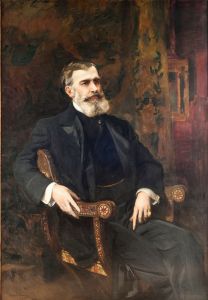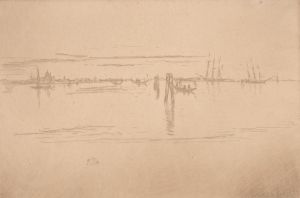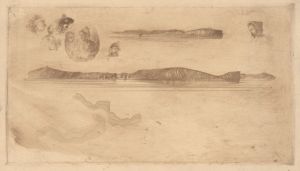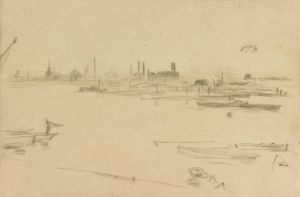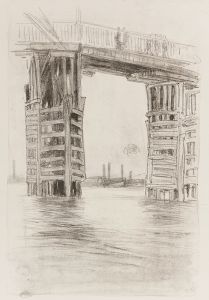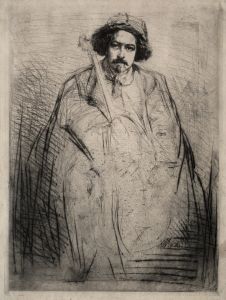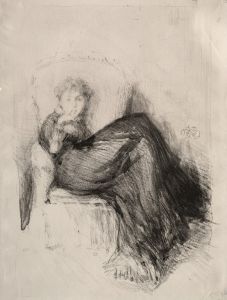
Portrait of Dr. William McNeill Whistler
A hand-painted replica of James Abbott McNeill Whistler’s masterpiece Portrait of Dr. William McNeill Whistler, meticulously crafted by professional artists to capture the true essence of the original. Each piece is created with museum-quality canvas and rare mineral pigments, carefully painted by experienced artists with delicate brushstrokes and rich, layered colors to perfectly recreate the texture of the original artwork. Unlike machine-printed reproductions, this hand-painted version brings the painting to life, infused with the artist’s emotions and skill in every stroke. Whether for personal collection or home decoration, it instantly elevates the artistic atmosphere of any space.
The "Portrait of Dr. William McNeill Whistler" is an oil painting by the renowned American artist James Abbott McNeill Whistler, completed in 1871. This portrait is a significant work within Whistler's oeuvre, showcasing his distinctive style and his ability to capture the essence of his subjects with subtlety and finesse.
James Abbott McNeill Whistler, born in 1834, was an influential figure in the art world, known for his contributions to the Aesthetic Movement and his advocacy for "art for art's sake." He was a proponent of creating art that emphasized beauty and harmony over narrative content. Whistler's approach to portraiture was no exception, as he often focused on the mood and character of his subjects rather than merely their physical likeness.
The subject of this portrait, Dr. William McNeill Whistler, was the artist's younger brother. Born in 1836, William pursued a career in medicine and became a notable physician. The close relationship between the brothers is evident in the care and attention to detail that James Whistler invested in this painting. The portrait captures William in a contemplative pose, exuding a sense of calm and introspection.
In this work, Whistler employs a restrained color palette, a hallmark of his style, which allows the viewer to focus on the sitter's expression and the subtle play of light and shadow. The background is understated, drawing attention to William's face and hands, which are rendered with delicate brushwork. This technique highlights Whistler's mastery in creating depth and texture, giving the portrait a lifelike quality.
The "Portrait of Dr. William McNeill Whistler" is also notable for its composition. Whistler's use of space and form reflects his interest in Japanese art, which he admired for its simplicity and elegance. The influence of Japanese aesthetics is evident in the painting's balanced composition and the harmonious arrangement of elements within the frame.
This portrait is part of Whistler's broader body of work that includes other famous pieces such as "Arrangement in Grey and Black No. 1" (commonly known as "Whistler's Mother"). Like many of his portraits, the painting of Dr. William McNeill Whistler demonstrates Whistler's ability to convey personality and emotion through minimalistic yet expressive means.
The painting is housed in the Hunterian Art Gallery at the University of Glasgow, which holds a significant collection of Whistler's works. The gallery's collection provides insight into Whistler's artistic development and his contributions to the art world during the late 19th century.
Overall, the "Portrait of Dr. William McNeill Whistler" exemplifies James Whistler's skill in portraiture and his commitment to creating art that transcends mere representation. Through his nuanced approach, Whistler captures not only the physical likeness of his brother but also a deeper sense of his character, making this portrait a lasting testament to both his artistic vision and his familial bond.






